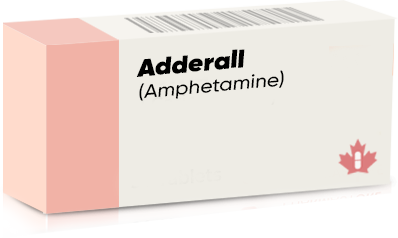| Product Name: | Adderall (Amphetamine) |
| Strength: | 30mg |
| Available packages: | 30, 60, 90, 120, 160, 200, 250, 300 pills |
| Payment Method: | E-Check | MASTERCARD |
| Price per pill: | From $4.85 |
| Shipment: | Express Delivery Service |
| Buy Now From: | VISIT PHARMACY |
A prescription drug entitled Adderall combines dextroamphetamine and amphetamine in combination. It is often used to treat narcolepsy and attention deficit hyperactivity disorder (ADHD). Adderall works by increasing the levels of certain chemicals in the brain called neurotransmitters. These neurotransmitters, like dopamine and norepinephrine, help with focus, attention, and impulse control. Adderall helps by boosting the availability of these neurotransmitters, which can help people with conditions like ADHD improve their ability to concentrate and manage their actions.
Unique Diagnostic Considerations
Adderall is a medicine used to help treat certain conditions like attention deficit hyperactivity disorder (ADHD). When thinking about using Adderall for this purpose, there are a few vital things to remember. First, if a person’s attention and focus get better when they take Adderall, it might suggest they have ADHD. Then, doctors need to find the right amount of Adderall that works best for each person, and they’ll need to see how long it helps. Before deciding someone has ADHD based on Adderall’s effects, you must consider other problems that might look like ADHD. Only trained doctors should decide if Adderall is right for diagnosis, and they should consider many things before using it. Remember, using Adderall to help diagnose ADHD is just a small part of the overall process.
Adderall for a Long Run
Continuous use of Adderall or other prescription drugs demands careful consideration of a number of variables. Several important factors should be taken into account when considering its usage over an extended length of time. Consultation with a certified medical specialist is the first and most important step. To decide if Adderall is a good long-term solution for you, they can evaluate your particular needs and medical history. To assess effectiveness, uncover any side effects, and change dosage as necessary, regular medical monitoring is required. It’s crucial to consider the possibilities of tolerance and reliance as well. Long-term use of Adderall has the possibility of resulting in various side effects, including increased heart rate, elevated blood pressure, insomnia, anxiety, and digestive issues. Regular check-ins with your doctor can help manage and address these side effects if they arise. Considering lifestyle adjustments is also needed. Adopting healthy habits such as proper nutrition, regular exercise, and adequate sleep can complement the effects of medication and potentially reduce the need for higher doses.
Adderall’s Neurotransmitter Effects
Adderall, a prescription medication primarily designed for ADHD, orchestrates a symphony of neurotransmitters in the brain. By elevating dopamine, serotonin, and norepinephrine levels, it addresses deficiencies in individuals with ADHD, restoring balance and normalizing stimulation levels. For those without ADHD, Adderall induces a sense of euphoria and heightened wakefulness by boosting dopamine and norepinephrine. This amphetamine’s influence extends to improving stress management, motivation, and attention while activating the prefrontal cortex for enhanced executive functioning.
Directives for Consumption Routine
To harness the full potential of Adderall, it’s crucial to follow the intake instructions diligently. Take the medication orally, once or thrice daily, as prescribed by your doctor, with or without food. The first dosage is typically taken upon waking, with subsequent doses spaced 4-6 hours apart. Consistency is key—taking Adderall at the same time each day aids in memory and optimizes its effectiveness. Avoid taking it before bedtime to prevent restlessness. Storing Adderall Safely – Keep Adderall in a securely closed container at room temperature (15-30 degrees Celsius or 59-88 degrees Fahrenheit). Ensure it’s out of reach for children and pets. Proper storage maintains the drug’s efficacy and safety.
Available Dosage Forms and Strengths
Both immediate-release (IR) and extended-release (XR) versions of Adderall are available on the market, giving several options for treating symptoms. The Adderall immediate-release form is developed for a rapid onset and relatively brief duration of effect. It is sold in dosages between 5 mg and 30 mg. To offer more immediate relief from symptoms like inattention, hyperactivity, and impulsivity, this form is frequently used two to three times per day. For consistent symptom control, additional doses may be needed throughout the day due to the brief duration of the effect. The extended-release type of the drug, called Adderall XR, on the other hand, aims to deliver a longer-lasting and more consistent release of the drug over time. Adderall XR is available in a broader range of strengths, typically starting from 5 mg and going up to 30 mg and even 40 mg. This allows for once-daily dosing, which can be more convenient and beneficial for individuals who require sustained symptom management throughout the day.
The choice between immediate-release and extended-release forms, as well as the specific strength of Adderall, depends on individual factors such as the severity of the condition, the desired treatment duration, and the presence of any other medical considerations.
Exploring Noteworthy Benefits
Adderall’s benefits extend beyond ADHD, with reported improvements in focus, concentration, and alertness. It has also been used off-label for narcolepsy treatment. While it may enhance mental stamina and studying effectiveness, its impact on overall intelligence remains uncertain. Individuals with ADHD may experience cognitive benefits, but non-ADHD users might notice a mental rush without the same cognitive enhancements.
Advisory Notices and Safety Measures
- Talk to your doctor before starting Adderall to ensure it’s suitable for you. Share your health history, including any heart problems or past drug issues.
- Follow your doctor’s prescribed dosage carefully; don’t take more or less. Keep in touch with your doctor to monitor how Adderall is working for you.
- Inform your doctor about any allergies you have to medicines or foods.
- Don’t mix Adderall with alcohol, as it can be unsafe and worsen side effects.
- If you’re pregnant or nursing, consult your doctor before using Adderall.
- Tell your doctor about all medicines you take to avoid harmful interactions.
- Be cautious when driving or operating machinery, as Adderall can affect your focus and coordination.
- If you’re elderly, your doctor might adjust the dosage, as older adults can be more sensitive to medication effects.
Evaluating Alternative Medication Options
Methylphenidate is another commonly prescribed stimulant medication for ADHD besides Adderall. It comes in various forms, including short-acting and long-acting formulations. Examples include Ritalin, Concerta, and Daytrana. If stimulant medications like Adderall aren’t suitable or well-tolerated, non-stimulant options can be considered. Atomoxetine (Strattera) is one such medication that works by affecting norepinephrine levels in the brain. Modafinil is a medicine mostly used to help people with sleeping disorders like narcolepsy, sleep apnea, and working at odd hours. Even though it’s not officially approved by the FDA for treating ADHD, some doctors might still prescribe it to help with ADHD symptoms. There’s a lot of evidence showing that modafinil could be helpful for paying attention and thinking better, which are important for ADHD.
Avoid these Combinations
Certain combinations pose risks when taking Adderall. Never combine it with monoamine oxidase inhibitors (MAOIs) like tranylcypromine or phenelzine, as this can lead to a severe spike in blood pressure. Additionally, combining Adderall with other stimulant drugs or certain antidepressants may result in adverse effects such as anxiety, high blood pressure, and an accelerated heart rate. Inform your doctor about any history of anxiety, glaucoma, high blood pressure, heart issues, or thyroid disorders to mitigate potential interactions.
Insights from Adderall Users
Sonya, Illinois
So, dealing with ADD and chronic fatigue was like living in a perpetual fog—couldn’t focus, always tired, zero motivation, you name it. Enter Adderall, my not-so-secret weapon. Started at 10mg XR, bumped it up to 30mg XR, and let me tell you, it’s been a game-changer. Sayonara has fog, anxiety, and attention struggles. Now, I can actually tackle one thing at a time, prioritize, and wake up without dreading the day. Side effects? Sure, a mild headache and some weight loss, but nothing compared to the life upgrade.
Ivan, Arizona
On Adderall XR 30MG, my life’s done a 180, even helping with my depression. I got the prescription when work was on the line. Taking it at 6 am daily, my mood’s steadier, and I’m not drowning in emotions. Still, I can express myself without full-blown breakdowns. Battling Major Depressive Disorder, this med’s been a game-changer, but no magic wand. ADD was always lurking, and it took me till 36 to see a psychiatrist. Now it’s easily managed and life is better than ever.
Owen, Virginia
I’m in my thirties and have tried Vyvanse and Concerta for ADHD before settling on Adderall (20mg). Vyvanse didn’t last, and the crash was rough. Concerta was a no-go—made me lethargic. Adderall’s my sweet spot, it gives me energy for work and kids. It also lasts until evening, though sleep can be tricky. It has minimal side effects in the beginning, but overall, a game-changer.



